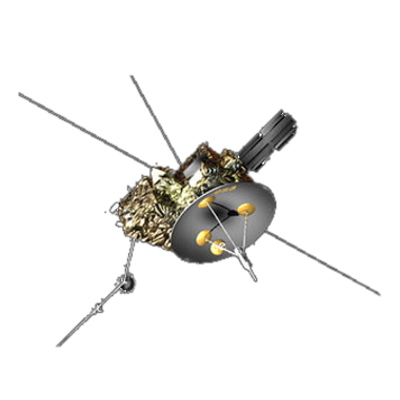Ulysses HISCALE Data Analysis Handbook
Chapter 5: Inflight Performance
This section shows the calibration signatures seen in plots from the standard LAN analysis software.
- SEEPHA Matrix Plot (below)
- LANSPECT Spectral Plot
- COMP Spectral Plot
- Time Plots from IDL_HS
SEEPHA Matrix Plot. The first example, shown in Figure 5.8, is from the SEEPHA program. This is a dE/dx vs E plot for the WART detector, created by plotting the energy deposited in the thin D detector vs the energy deposited in the C detector where the particle stops. This example is from a 2-hour period while the covers were closed during the day 49, 1992 (post-Jupiter) calibration. It can be seen that the only counts in the 256 × 256 pixel matrix are in the lower left corner where the H and He tracks are found. A blowup of this region is shown in Figure 5.9, where the W1-4 energy regions have been delineated. The nominal energy bounds for these channels are shown in Table 5.12.
| Channel | Emin (keV/nucl) | Emax (keV/nucl) | Species |
| W1 | 480. | 966. | H |
| W2 | 968. | 1204. | H |
| W3 | 389. | 1278. | He |
| W4 | 1277. | 6984. | He |
Figure 5.8 SEEPHA plot during 92049 calibration

Figure 5.9 Enlargement of PHA matrix

The peaks from the two alpha-particle sources can be seen in the helium channels, the Cm source just on the W3-W4 line at ~5.5 MeV, and the Gd source at ~2 MeV. The counts in the hydrogen channels near the W1/W2/W3 intersection are due to scattered alphas from the Cm source which have not deposited the full amount of energy in the C detector, and appear as hydrogens. Because of the PHA priority scheme (to always count something different from whatever was last detected), the instrument is always looking for anything other than helium, and these pseudo-hydrogens are always counted. Also, a large number of particles from the Cm source have deposited the proper C energy in the detector but have deposited an insufficient D amount. These appear in W2 just below the W4 line and are also counted as hydrogens. The number of counts in each of these peaks is estimated in Section 5.2.3.
Next: 5.2.2 continued (LANSPECT Spectral Plot)
Return to Chapter 5 Table of Contents
Return to Ulysses HISCALE Data Analysis Handbook Table of Contents
Updated 8/8/19, Cameron Crane
QUICK FACTS
Mission End Date: June 30, 2009
Destination: The inner heliosphere of the sun away from the ecliptic plane
Orbit: Elliptical orbit transversing the polar regions of the sun outside of the ecliptic plane



